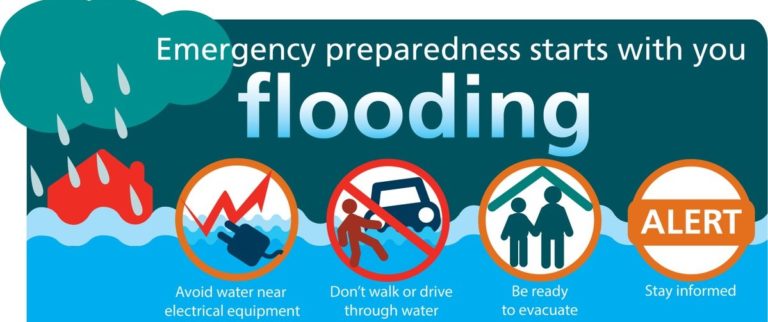The 2020 hurricane season is upon us, and the National Oceanic and Atmospheric Administration (NOAA) has predicted an above average amount of activity. According to NOAA forecasters, the outlook predicts a 60% chance of an above-normal season, a 30% chance of a near-normal season, and only a 10% chance of a below-normal season. The average forecast from 13 weather forecasting centers predicts eight hurricanes and seven known storms. Four of these storms are predicted to be Category 3 or stronger. With multiple climate factors and forecasting centers indicating above normal activity, proactive, personal preparation is extremely important and can go a long way toward preventing a flooding disaster.
While the Western North Carolina region experienced a fairly wet spring, we have been fortunate that, in the City of Asheville, we have not experienced any recent heavy flooding. With hurricane season running from June 1 through Nov. 30, residents should not overlook the potential danger resulting from flood waters, high wind, or other natural disasters.
Even if you do not live near a waterway, a heavy rain event can be devastating. By taking precautionary steps and familiarizing yourself with safety information, Asheville residents can be better prepared. It is your responsibility to be informed and take action – the preparations you make today can limit tomorrow’s risks, exposure, and losses.
Resources for our residents
A good source of information is the City of Asheville’s Climate Resiliency Guide. Published in June 2019, the guide provides advice on short- and long-term flood planning measures, including:
- Finding out if your home is in a designated flood zone at this link;
- Preparing a flood plan and evacuation routes, and building a flood kit;
- Purchasing flood insurance;
- Taking emergency and permanent methods for floodproofing your home or business;
- Elevating and securing valuable documents and property;
- Incorporating techniques for reducing runoff and redirecting stormwater, including clearing drains, protecting stream buffers, collecting rainwater and maintaining natural vegetation; and
- Having an emergency plan in place for moving to higher ground once flooding occurs so that emergency personnel do not have to perform rescues.
Another vital tool for Asheville residents is to know your neighborhood. Asheville’s .Climate Resiliency Guide provides an in-depth look at the City and which areas are most susceptible to flooding. Understanding how the location of your home or business affects your flooding risk will allow you to prepare for potential disasters and become more resilient when extreme weather strikes.
Sign up for emergency alerts
Emergency alerts from the City of Asheville and Buncombe County are another valuable source of information. To sign up for Asheville Alerts, click here or call 2-1-1. You can also sign up for Community Connect, which provides critical information to first responders prior to arriving at your home in case of emergency. To sign up for Buncombe County alerts, text BCALERT to 888-777.
The City of Asheville is also available to answer your emergency preparedness questions. Residents can access information online on the Stormwater Services webpage.
Since none of us can reliably predict the weather and how it might impact us in the future, the City of Asheville encourages each of you to examine your individual situation, know your potential risks and exposures, become informed and get prepared. Everyone must do their part to protect themselves, their family and property.
